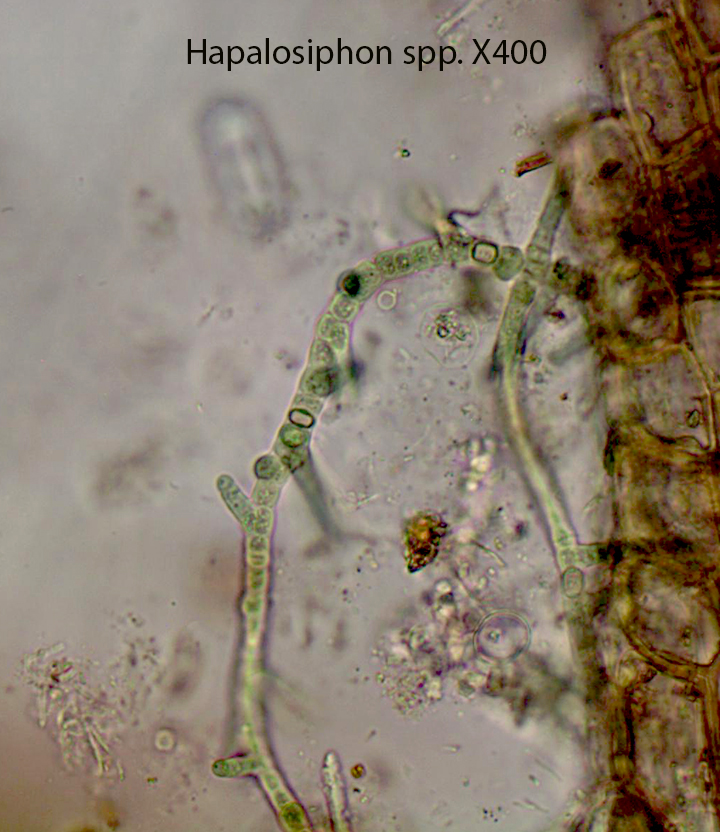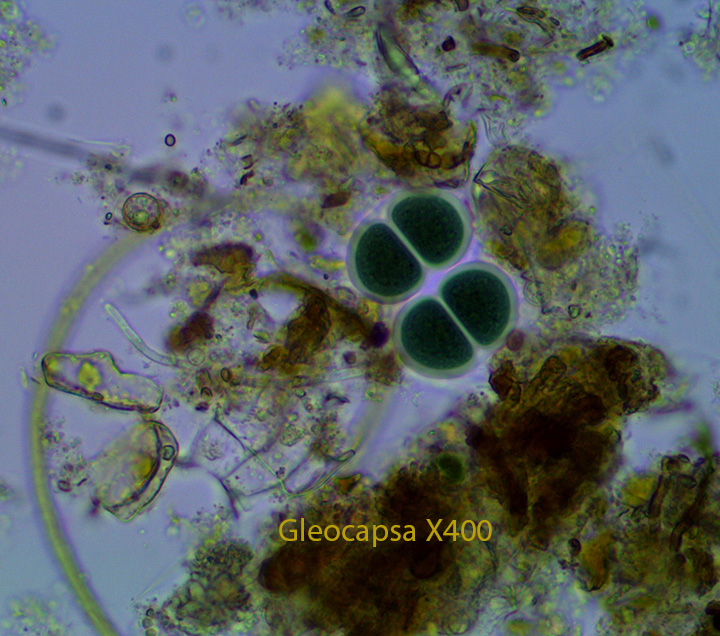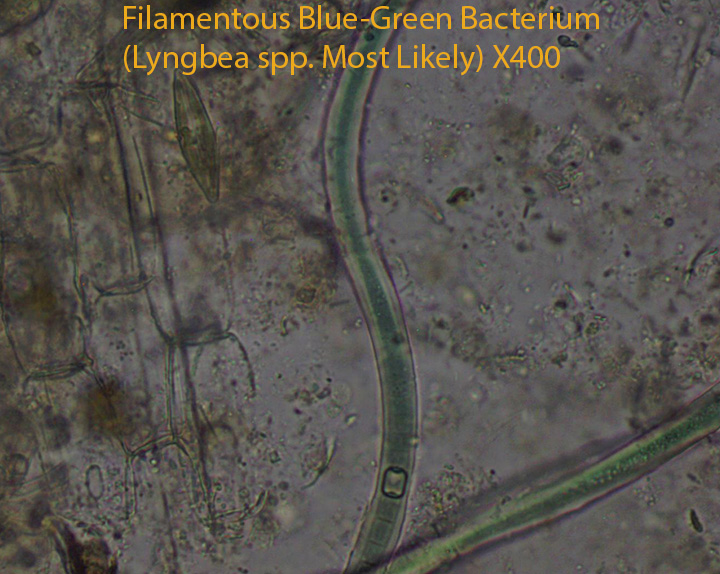Bacteria
1. Heterotrophic Bacteria
Bacteria belong to a large group of microscopic, unicellular organisms that superficially can be separated by shape. Look carefully at the video recorded at a magnification of 400X and see if you can find circular (Cocci), rod-shaped (Bacilli), and spiral shaped (Spirilli) types. The bacteria (Heterotrophic) are the smallest dots. Towards the end of the video spiral bacteria can be seen moving like a corkscrew. Heterotrophic bacteria are unable to manufacture their own food as green plants do. They generally produce enzymes that digest the organic matter in dead and dying organisms. The products of digestion contain a number of elements such as nitrogen and phosphorus that are necessary to sustain life. Nitrogen or nitrogen containing compounds can be used to make protein. Phosphorus along with other chemical elements can be used to synthesize ATP and DNA. They absorb some of these compounds for their own use and leave behind some that can be used by other organisms. Photosynthetic bacteria are able to make their own food. This section only deals with the presence of heterotrophic bacteria in a very general way.
2. Filamentous Bacteria
Beggiatoa spp.X400
Beggiatoa is a filamentous bacterium that is normally found in hydrogen sulfide rich environments. The filaments may be colorless or contain dark sulfur granules. The bacterium oxidizes hydrogen sulfide to elemental sulfur, providing energy to fuel their metabolism. The filaments slowly glide across the screen in the movie below.
3. Blue-green Bacteria (Formerly Called Blue-green Algae)
Blue green bacteria produce sugars photosynthetically using water as a hydrogen source. They may be unicellular or form colonies. One type of colony is a filament, made up of cells stacked on top of one another. Certain filamentous species glide over the substratum while others may wave back and forth. Blue green bacteria are an important part of freshwater ecosystems because of their ability to fix atmospheric nitrogen. They use this nitrogen to form their own proteins and other important compounds and when they die and decompose this nitrogen is made available to other organisms for their use. Hapalosiphon spp. was found at all stations in the spring and early summer. Several other less abundant blue-green bacterial species were spotted but not identified.





4. Purple Photosynthetic Bacteria
Purple photosynthetic bacteria form sugars photosynthetically using hydrogen sulfide instead of water as follows:
CO2 + 2 H2S (Hydrogen Sulfide) = CH2O + H2O + 2S (Sulfur).





Leave a comment